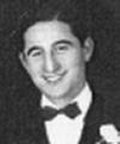THE GRUESOME CASE of Richard Loeb and Nathan Leopold, who in 1924 murdered a randomly chosen schoolboy for “intellectual kicks,” inspired a slew of studies and similarly inclined stories.
“Rope,” made by Alfred Hitchcock in 1948, was adapted by Hitchcock, Hume Cronyn and Arthur Laurents from a play by Patrick Hamilton. It deals only with the philosophical nature of the killing, which in this case is committed by two college students (John Dall and Farley Granger). They have taken to heart the pronouncements of one of their professors (James Stewart), who maintains there is an intellectual elite that is morally justified in killing its inferiors, and so the movie begins with Dall and Granger strangling a classmate.
One of Hitchcock’s goals in making this movie was to preserve the tension of the play, in which all action unfolds in the course of a single evening. To maintain such a continuum in movies requires no cuts from scene to scene and that’s precisely what he did. In four long “takes,” the movie moves us from room to room in the students’ apartment, and from long-shot to close-up in an uninterrupted flow. Clouds move in a cyclorama seen through a large window and the sky darkens into evening; reel changes are effectuated by panning past a close-up of a character’s back.





























